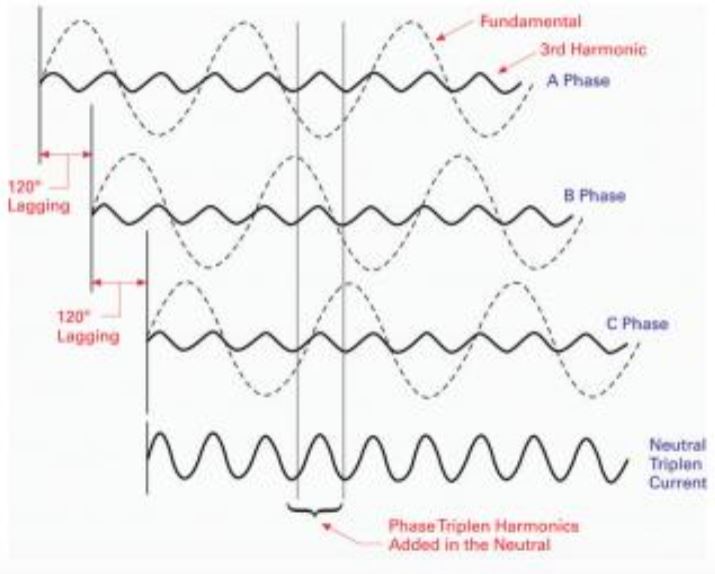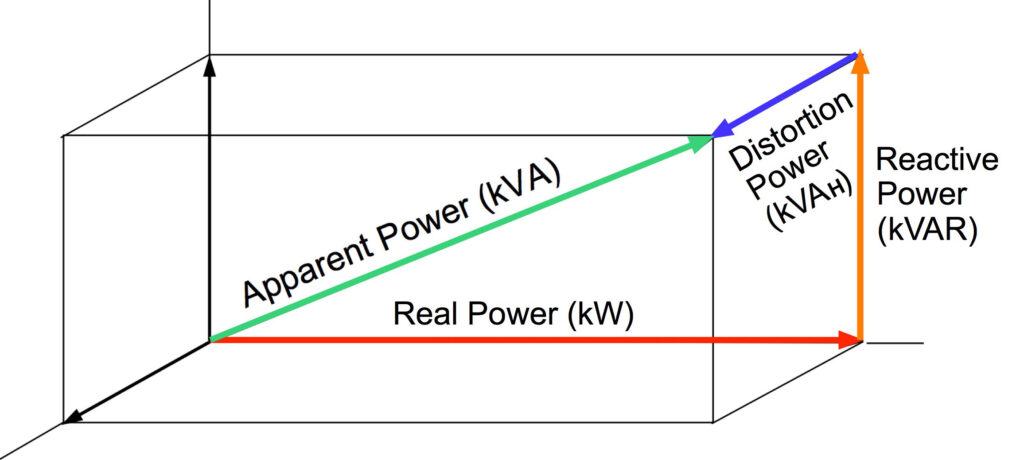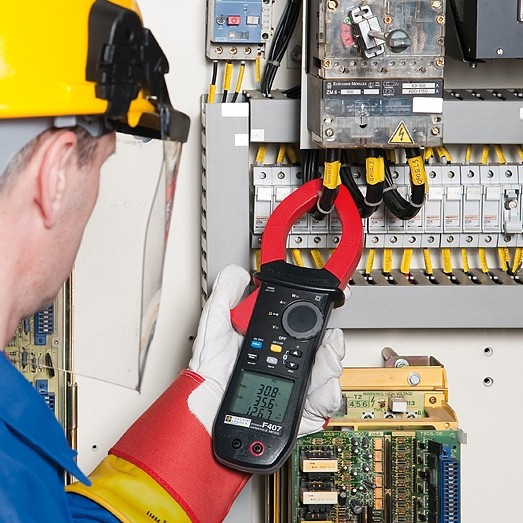While it’s sometimes useful to look at individual harmonics, particularly when working out what may be producing them, at other times it’s more helpful to have a measure of the combined level of harmonics in the supply. This measure is called total harmonic distortion or THD.
As electrical professionals, we’re mostly interested in harmonic currents, so we’ll want to look at total harmonic current distortion or THDi. There’s no need to calculate THDi, as any decent instrument capable of measuring harmonics will do that automatically.
One of the many reasons that THDi is an important measure is that harmonics also affect power factor. Often, we consider power factor as depending only on the phase difference between the voltage and current in the load. That is actually what is known as Displacement Power Factor. The true power factor also involves calculating the Distortion Power Factor, and for that you first need to measure THDi.
As an example, if the power factor based on the phase relationship alone is 0.90 but the THDi is 35%, the true power factor would actually be 0.85. That may sound like a small difference, but over time it can add up to a lot of money wasted on unnecessarily high energy bills.
If you’re still not totally convinced about the importance of harmonics, consider this: the current edition of the IET Wiring Regs mentions the word “harmonic” no fewer than 81 times. Regulation 132.2, for example, covers the number and type of circuits required and states that this shall be determined taking into account factors that include “any special conditions, such as harmonics”. So even at the most basic stage of deciding on how many circuits are needed in an installation, harmonics must be considered.
Regulation 523.6.201 states that “The tabulated current-carrying capacities in Appendix 4 are based on fundamental frequency only and do not take into account the effect of harmonics.” That’s important, because the tables in Appendix 4 are those normally used as the basis for designing and testing installations, and the regulation just quoted means that these tables are not necessarily valid when harmonics are present!
To show just how big an issue this can be, it’s worth restating the example we gave in our first article. Using a “standard” clampmeter from a well-known manufacturer we measured the current in a circuit supplying compact fluorescent (CFL) luminaires. The reading was 2.9 A. When we repeated the measurement with a clampmeter that handles harmonics correctly, we found the true current to be 6.0 A. That’s a very big difference!




